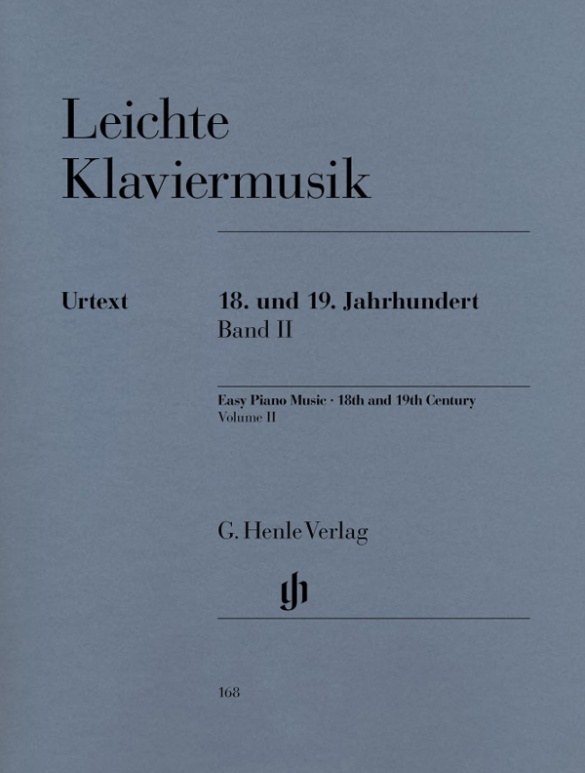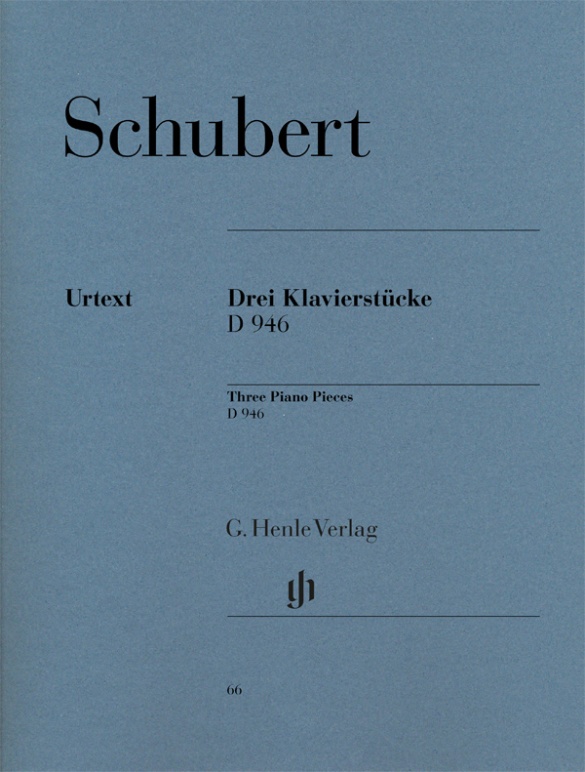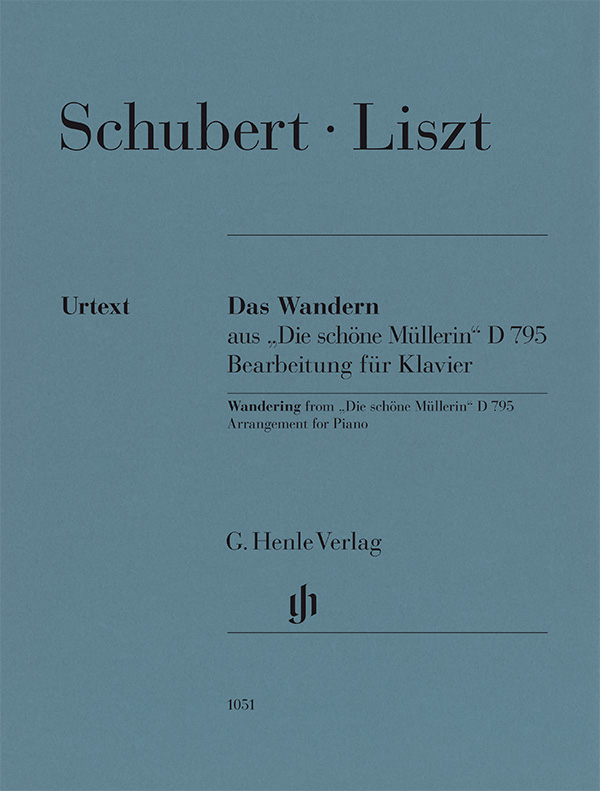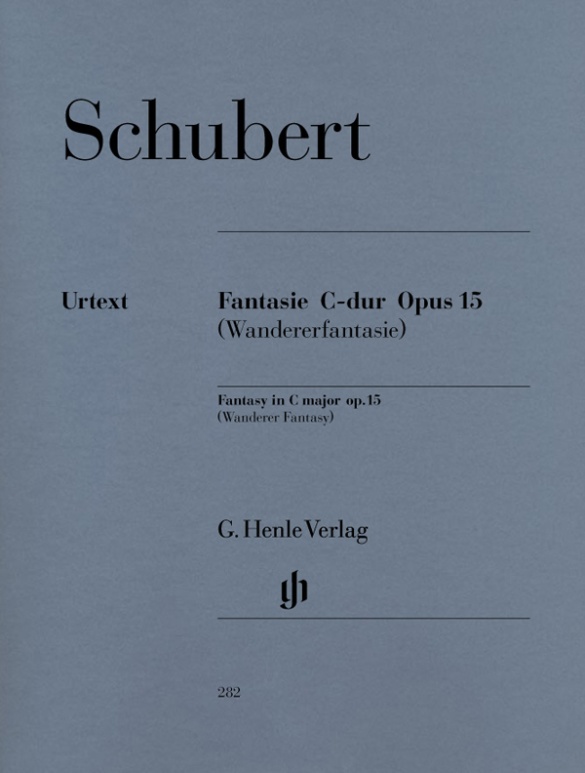

Franz Schubert
Fantaisie en Ut majeur op. 15 D 760 (Wandererfantasie)
Schubert composa la fantaisie dite «Wanderer» en novembre 1822. Considérée généralement comme une année de crise, cette année-là vit pourtant la composition de toute une série d’œuvres importantes de Schubert – notamment la symphonie en si mineur dite «Inachevée» écrite en même temps que la fantaisie «Wanderer». Plusieurs œuvres ont pu servir de modèle, en particulier les fantaisies de C. Ph. E. Bach et de Mozart. Cependant, dans ce chef-d’œuvre, Schubert pousse le genre encore plus loin. Il y allie le principe de la fantaisie avec celui du cycle de la sonate, subdivisant l’ensemble en quatre grandes parties (mouvements) se fondant sans interruption les uns dans les autres. L’ensemble est axé autour d’un thème unique, quelques mesures tirées de la chanson «Der Wanderer» dans le second mouvement. Ce fut l’une des rares pièces instrumentales de Schubert impri-mées de son vivant. Elle reçut déjà à l’époque un accueil enthousiaste de la critique et fait au-jourd’hui toujours partie des œuvres de ce compositeur les plus jouées, malgré des exigences techniques et musicales élevées.
Voir le Henle-Blog pour savoir plus sur cette édition.
CONTENU/DÉTAILS
(Explanation)
Exclusively in the Henle Library APP
Doigté de: Claudius Tanski
CONCERNANT LE COMPOSITEUR
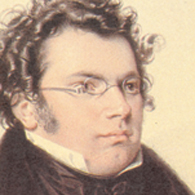
Franz Schubert
Il est non seulement le créateur du lied savant et son représentant majeur au XIXe s., mais il a également développé dans ses œuvres instrumentales un concept d’écriture opposé à celui du classicisme viennois. Ses «célestes longueurs» reposent sur une structuration du temps qui ne fonctionne pas selon le principe de l’avancement mais thématise le retardement; les modifications ne surviennent généralement pas au cours d’un développement continu, mais par une intrusion soudaine. Ses lieder très élaborés contredisent l’idéal de simplicité qui domine l’esthétique du lied de son temps. Ils fondent le lied savant du XIXe s. et passent pour avoir inspiré de manière exemplaire les générations de compositeurs qui ont suivi. Ils sont déterminés par un langage harmonique complexe, l’intégration d’idiomes de la musique instrumentale, des modèles sémantiques et un nouveau rapport entre texte et musique, en ce que le poème est interprété dans son ensemble par la composition et non pas simplement par le coloriage de mots isolés. Malgré sa brève existence, son œuvre immense comprend 600 lieder, parmi lesquels ses célèbres deux cycles; 7 symphonies achevées, plusieurs symphonies inachevées (dont l’ «Inachevée» en Si mineur) et d’autres œuvres pour orchestre; de nombreuses œuvres de musique de chambre, 14 sonates achevées pour piano, plusieurs sonates inachevées et autres compositions pour piano, des danses pour piano et œuvres pour piano à quatre mains; 6 messes et autres compositions spirituelles; de nombreuses pièces pour chœur ou ensembles vocaux, avant tout pour voix d’hommes. Bien qu’il ait aussi contribué au genre du théâtre musical et que ses amis lui aient prédit une carrière de compositeur d’opéra, seuls deux de ses 10 opéras achevés furent exécutés de son vivant ainsi que la musique de scène pour «Rosamunde».
| 1797 | Né le 31 janvier à Himmelpfortgrund près de Vienne, fils d’un instituteur. Premières leçons de piano auprès de son frère Ignaz, leçons de violon à l’âge de 8 ans auprès de son père. |
| À partir de 1808 | Enfant de chœur à la Hofkapelle; fréquentation du Stadtkonvikt impérial et royal et joue du violon au sein de l’orchestre de cet établissement. Cours auprès d’Antonio Salieri qui tente de familiariser son élève, déjà enthousiasmé par Mozart, Haydn et Beethoven, avec l’opéra italien. Premières compositions conservées. |
| 1811 | Composition de son premier lied «La Plainte d’Agar». |
| 1813–14 | Fréquentation de l’École normale, puis enseigne dans l’école de son père. |
| 1813/14 | Composition de l’opéra féerique «Des Teufels Lustschloss» (Le Château des plaisirs du diable) et de la Symphonie n° 1 en Ré majeur de forme classique. |
| 1814 | Composition de la messe en Fa majeur D 105. Il écrit des lieder qu’il groupe en fonction des poètes, p. ex. d’après Matthisson et Goethe, parmi lesquels «Gretchen am Spinnrade» (Marguerite au rouet) qui marque le début du lied savant. |
| 1815 | Composition des Singspiele «Claudine von Villa Bella» d’après Goethe et «Der vierjährige Posten» (La Sentinelle de quatre ans). Achèvement de la Symphonie n° 2 en Si bémol et majeur et composition de la Symphonie n° 3 en Ré majeur ainsi que les messes n° 2 en Sol majeur et n° 3 en Ré majeur; parmi les lieder «Erlkönig». |
| 1816 | Composition de 110 lieder, des Symphonies n° 4 en Ut mineur et n° 5 en Si bémol majeur, la messe en Ut mineur. Il quitte la maison de ses parents, interrompt son activité d’instituteur et s’installe chez Schober. |
| 1817 | 60 lieder parmi lesquels «Der Schiffer», «Ganymed», «An die Musik», «Die Forelle», «Gruppe aus dem Tartarus», «Der Tod und das Mädchen». Ses compositions sont exécutées peu à peu (son œuvre comprend déjà environ 500 œuvres). Retour à la maison de ses parents. |
| 1818 | Il donne des cours aux filles du comte Johann Karl Esterházy. Composition de pièces pour piano à quatre mains. |
| vers 1819 | Composition du Quintette avec piano en La majeur («La Truite»). |
| 1820 | Création à Vienne du mélodrame «Die Zauberharfe» (La Harpe enchantée) et du Singspiel «Die Zwillingsbrüder» (Les Frères jumeaux). Entre autres le lied «Frühlingsglaube». |
| 1821 | Première Schubertiade: soirée musico-littéraire du cercle des amis de Schubert. Publication des lieder «Erlkönig» et «Gretchen am Spinnrade» ainsi que d’autres lieder sur des poèmes de Goethe et de 36 danses. |
| 1821–22/24 | Composition / création d’«Alfonso und Estrella», l’un des premiers opéras allemand en composition continue. |
| 1822 | Achèvement de la Messe en La bémol majeur; Symphonie n° 7 en Si mineur («Inachevée»); Fantaisie en Ut majeur («Wanderer») pour piano qui réunit en un seul mouvement les quatre mouvements caractéristiques de la symphonie. |
| 1823 | Composition du Singspiel «Les Conjurés» (création à Francfort-sur-le-Main en 1861), de l’opéra héroïco-romantique «Fierrabras» (création à Karlsruhe en 1897) et de la musique de scène pour «Rosamunde», créée à Vienne. Cycle de lieder «La belle Meunière», autres lieder dont «Auf dem Wasser zu singen», «Lachen und Weinen»; Sonate pour piano en La mineur D 784. |
| 1824 | Assure une nouvelle fois l’instruction des enfants du comte d’Esterházy. Quatuor à cordes en Ré mineur («La Jeune fille et la mort»). «Wandrers Nachtlied» («Über allen Gipfeln ist Ruh»). La Sonate pour piano gagne en importance. |
| 1825 | Long voyage de villégiature, en autres vers Gmunden-Gastein où il compose la Grande Symphonie en Ut majeur (n° 9, en l’occurrence 8) dans laquelle la forme classique est considérablement élargie (p. ex. le motif de cor au début, structuration du temps). |
| 1827 | Cycle de lieder «Voyage d’hiver» (contraste entre des niveaux de rêve et de réalité); Messe allemande; 4 Impromptus pour piano; Trios avec piano en Si bémol majeur D 898 et Mi bémol majeur D 929. |
| 1828 | Publication des 6 «Moments musicaux» pour piano. Composition des trois dernières sonates pour piano en Ut majeur, La majeur et Si bémol majeur (la dernière avec une tendance vers l’ésotérisme), du mouvement de sonate en La mineur (Lebensstürme) pour piano à 4 mains, de la Messe en Mi bémol majeur. «13 lieder d’après des poèmes de Rellstab et Heine» (posthume, «Chant du cygne»). Au mois de mars, concert qui n’est consacré qu’à sa propre musique. Meurt le 19 novembre à Vienne. |
About the Authors
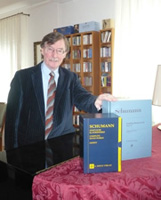
Ernst Herttrich (Editeur)
Dr. Ernst Herttrich, born in 1942 in Würzburg, read musicology, history, German and theology at the universities in Würzburg and Cologne. In 1970 he earned his doctorate in Würzburg with a study of the expression of melancholy in the music of Mozart.
From 1970 to 1990 he was an editor at G. Henle Publishers in Munich, after which he was Head of the Beethoven Complete Edition for over 15 years. In 1999 he took over as Head of the Beethoven-Haus Publishers, and from 2001 was made Head of the Beethoven-Archiv, the research centre at the Beethoven-Haus.
He has been a visiting professor at Meiji Gakuin University in Tokyo and has undertaken several lecture tours both there and to Kyoto. His research interests include source studies, editorial techniques and music history. Herttrich’s publications include “Beethoven. Liederkreis an die ferne Geliebte” (Bonn 1999) and “Ludwig van Beethoven. Biographie in Bildern” (Bonn, 2000). Herttrich has edited over 100 Urtext editions for G. Henle Publishers.
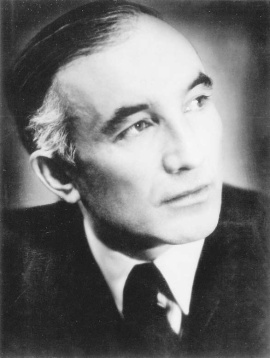
Hans-Martin Theopold (Doigtés)
Prof. Hans-Martin Theopold, was born to a pastor’s family in Detmold on 22 April 1904, the youngest of five children. Even as a child he often played the organ in the “Marktkirche” and soon began to take piano lessons with Theodor Vehmeier. At the age of 17 he made his debut at the Landestheater in Detmold with Ludwig van Beethoven’s Piano Concerto in C major under Friedrich Quast (Herford). Following the successful completion of his schooling at the Gymnasium Leopoldinum in Detmold, he went on to study music and piano (main subject): from 1922–23 at the “Württembergische Hochschule für Musik” in Stuttgart (with Max Pauer, 1866–1945) and then from 1923–1928 at the “Staatliche Akademische Hochschule für Musik” in Berlin-Charlottenburg (with Richard Rössler, 1880–1962, and Waldemar Lütschg, 1877–1948). After completing his piano studies (graduating with “very good”) in 1928, he began an active solo career both at home and abroad (USA, Switzerland, Scandinavia, the Baltic states, the Balkans). As a member of the Chamber Music Association of the State Opera in Berlin (from 1933) he also gave countless chamber music concerts, including ones with his violin partner Gustav Havemann (1882–1960).
In the 1930s, audiences and the press alike raved about Theopold’s extraordinary gifts as a pianist: “This young player has it in him to soon become one of the best players in Germany. A superior technique, a wonderful singing piano tone, the strength of a Titan, but not at all hard due to the incomparably gentle elasticity of his touch” [Münchener Zeitung, 21 November 1933]. – “H.M. Theopold gave convincing proof of his splendid pianistic ability in an extremely gripping sonata with a modern idiom by Alban Berg, but predominantly in Schubert’s […] Wanderer Fantasy, which he played with a polished technique and creative power” [Weser-Zeitung, 21 December 1932]. Theopold was awarded several prizes, including the “Grotrian-Steinweg-Preis” in 1928.
In 1937 Theopold became a teacher for the piano (main subject) at the “Bayerisches Staatskonservatorium der Musik” in Würzburg. In 1939 he married Irene Tatjana Wülfing, who was from Moscow. From 1943 he became head of the piano master-class at the “Nordische Musikschule” in Bremen, although this was interrupted by the events of the war. Following his return from a prisoner of war camp, Theopold gave concerts and taught although he did not hold a permanent position. From 1955–1956 he was acting head of the piano master-class at the “Bergisches Landeskonservatorium” in Wuppertal, finally being appointed Professor for Piano on 1 April 1956 at the “Staatliches Institut für Schul- und Volksmusik” in Detmold, later at the “Nordwestdeutsche Musikakademie Detmold” (today “Hochschule für Musik Detmold”), where he taught for decades. On 30 September 1969 he retired. “His students extol his pedagogical gifts. […] Humour, charm, helpfulness and kind-heartedness moderate the strictness of his professional ethos as a musician and teacher” (Lippische Rundschau, 23 April 1969; see also: Lippische Landeszeitung 22 April 1969 on the occasion of Theopold’s 65. birthday: “Prof. Theopold, a modest but at the same time energetic man, is an enthusiastic teacher”). Theopold died in Detmold in 2000.
Contact with Günter Henle was established directly after the publishing house was founded, when Theopold thanked the publishers with great enthusiasm for its first Urtext editions. His extensive correspondence with the publishing house was bequeathed to the Lippische Landesbibliothek in 2014 to ensure its long-term accessibility to the public. The letters testify not only to Theopold’s great interest in musical sources and text questions but also to his initial strict refusal (!) of fingerings in text-critical editions such as these: “For fingerings are and remain something individual no matter what their quality” (letter to Günter Henle from 26 May 1949 {publishing house archives}). Günter Henle was not, however, to be swayed and stressed the necessity of fingerings in his Urtext editions: “It is better to publish the Urtext […] with fingerings that are not necessary for a few individuals, or that might even, I admit, be considered irritating here and there” (letter to Hans-Martin Theopold of 17 September 1953).
It was only in 1955 that Theopold accepted Günter Henle’s offer of contributing fingerings for an Urtext edition that was in the process of being prepared by way of trial. (HN 74, Schubert, Complete Dances for Piano, Volume 1). Following this, Theopold was commissioned to write the fingerings for nearly all of the publishing house’s new editions in quick succession. Günter Henle, himself a good pianist, greatly valued Theopold’s fingerings, and also the many suggestions regarding the musical text in question. In addition, Theopold was always very reliable, thorough and conscientious – something that is not unimportant with editorial work!
Thus to date Hans-Martin Theopold has provided the fingerings for the greatest number of Henle Urtext editions by far – 226 editions (!) in total.
We would like to thank Mrs Margot Theopold and the Hochschule für Musik in Detmold for their great support in providing biographical material.
G. Henle Verlag
Informations sur la sécurité du produit

G. Henle Verlag
Vous trouverez ici des informations sur le fabricant du produit.G. Henle Verlag e.K.
Forstenrieder Allee 122
81476 München
Allemagne
info@henle.de
www.henle.com
recommandations
autogenerated_cross_selling
Autres éditions de ce titre
Autres éditions de ce titre


